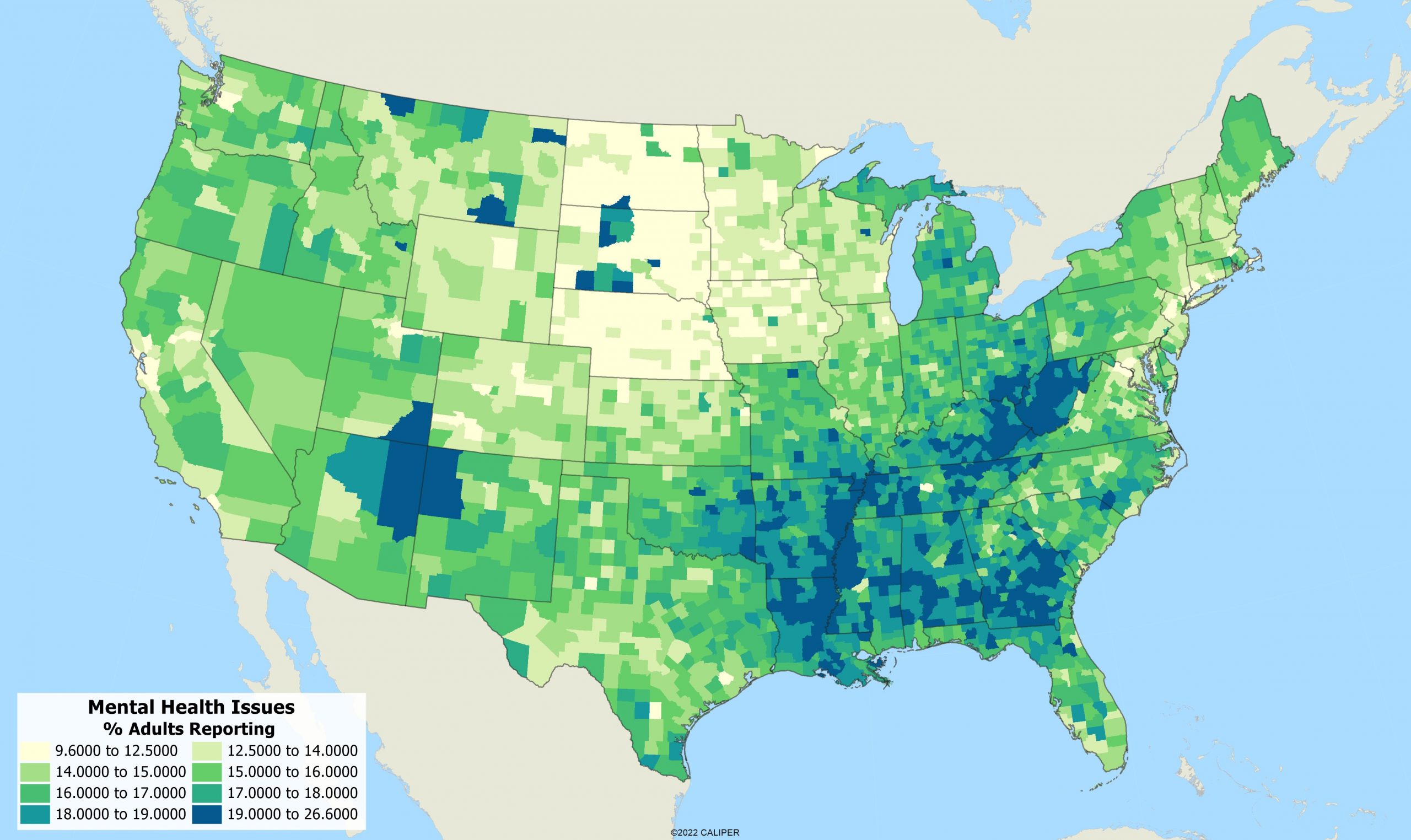In the last year, AGS has released an additional database with health related variables: Chronic Diseases and Risk Factors. This database joins the Healthcare database that AGS has had in our library for many years. But how are these databases different, and when should you use them?
The AGS Healthcare database, which has been around for many years, has become a staple for those needing the geographic demand of services. This database is split into two parts: hospital discharges and emergency department diagnoses/procedures. The first is based upon the primary diagnosis upon release from hospital and the second based on procedures undertaken by emergency departments. While there is much overlap in terms of disease, these measure two separate types of health care utilization. For health care providers, hospitals, and insurers, this data can provide valuable insights that can help guide the efficient allocation of resources, the locations of facilities, and the staffing by specialty. The map below shows the ratio between the dialysis access index and demand for dialysis, measured by the expected number of hospital discharges for kidney and urinary tract disorders. Higher scores are given to areas with more services available. Areas with low scores are difficult to service – patients need regular and often extended treatments – far from home.

Chronic Disease and Risk Factor is a database that takes a look at the population as a whole, rather than just those serviced at a hospital. It can also be used to predict future need for hospitals and doctors, as a high amount of risk factors could be an indication for future medical needs. Chronic Disease and Health Risk Factors can be helpful for economic development, retailing, research, and hospital facility planning and development. One of the most important risk factors are mental health issues. As you can see on the map below, this is very clearly a serious problem in the rural south, Appalachia, and the native reservations of Oklahoma and four corners region. Overall, the best mental health is in the rural upper Midwest. Those suffering from mental health issues are less likely to care for themselves in many ways, such as exercise, diet and overall grooming behaviors, which can lead to declines in physical health.



Recent Comments